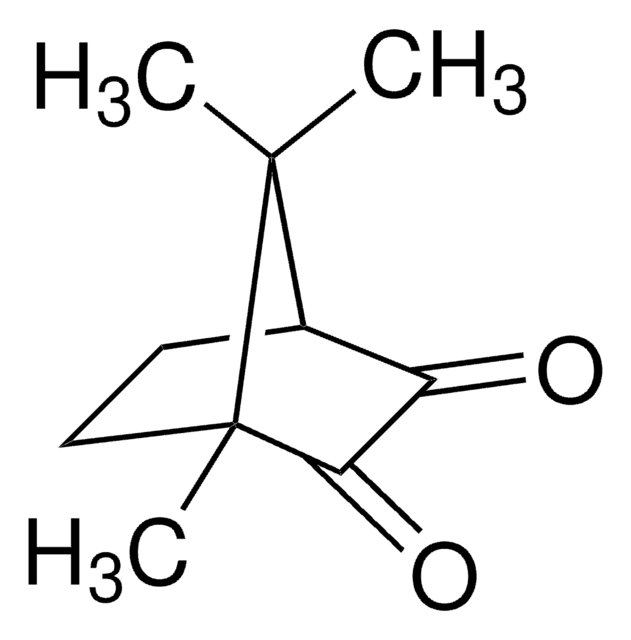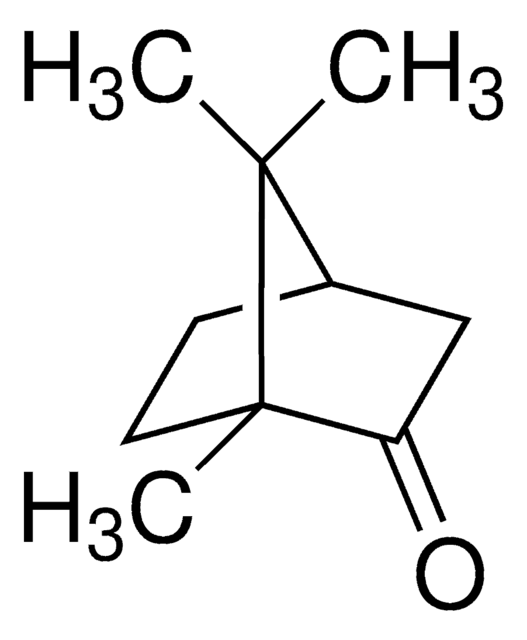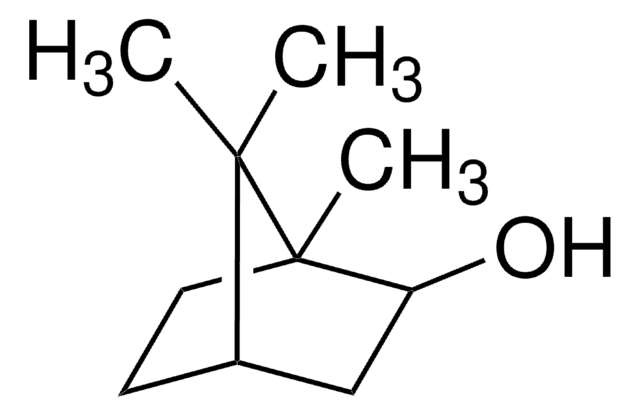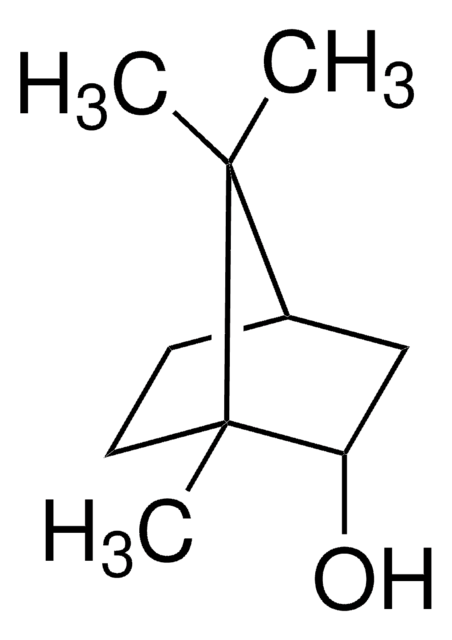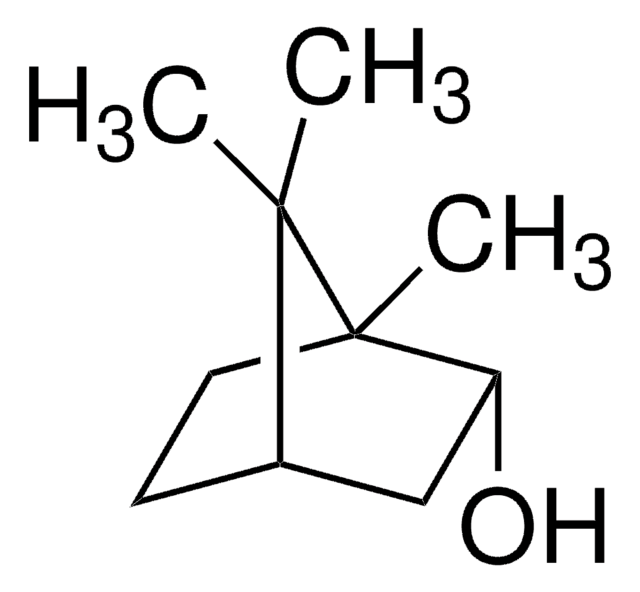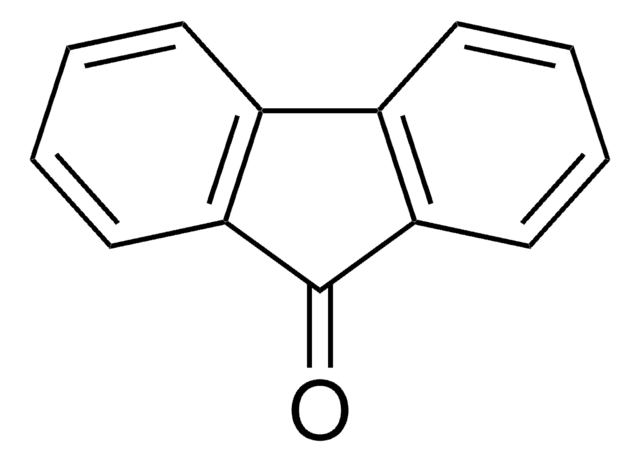272078
(1S)-(+)-Camphorquinone
99%
Synonym(s):
(1S)-(+)-Bornanedione
Sign Into View Organizational & Contract Pricing
All Photos(1)
About This Item
Empirical Formula (Hill Notation):
C10H14O2
CAS Number:
Molecular Weight:
166.22
Beilstein/REAXYS Number:
2613999
EC Number:
MDL number:
UNSPSC Code:
12352115
PubChem Substance ID:
NACRES:
NA.22
Recommended Products
Quality Level
assay
99%
optical activity
[α]20/D +100°, c = 1.9 in toluene
mp
197-201 °C (lit.)
functional group
ketone
SMILES string
CC1(C)[C@H]2CC[C@]1(C)C(=O)C2=O
InChI
1S/C10H14O2/c1-9(2)6-4-5-10(9,3)8(12)7(6)11/h6H,4-5H2,1-3H3/t6-,10+/m0/s1
InChI key
VNQXSTWCDUXYEZ-QUBYGPBYSA-N
Looking for similar products? Visit Product Comparison Guide
Application
Bioreduction of quinones and other ketones by red algae.
Chiral starting material.
Storage Class
11 - Combustible Solids
wgk_germany
WGK 3
flash_point_f
Not applicable
flash_point_c
Not applicable
ppe
Eyeshields, Gloves, type N95 (US)
Choose from one of the most recent versions:
Already Own This Product?
Find documentation for the products that you have recently purchased in the Document Library.
Ettore Castiglioni et al.
Applied spectroscopy, 64(12), 1416-1419 (2010-12-15)
Among the various chiroptical spectroscopic techniques available today, circularly polarized luminescence (CPL) plays a minor role and is still used by a limited number of specialists. The cost of the few commercial instruments available and the complexity of homemade apparatuses
Kunio Ikemura et al.
Dental materials journal, 29(5), 481-501 (2010-09-23)
This paper reviews our recent studies on radical photopolymerization initiators, which are used in the design of light-curing dental adhesives and resin composites, by collating information of related studies from original scientific papers, reviews, and patent literature. The photopolymerization reactivities
Jonggu Park et al.
Journal of biomedical materials research. Part A, 93(4), 1245-1251 (2009-10-15)
The selection of an appropriate photoinitiator system is critical for efficient polymerization of dental resins with satisfactory mechanical and physical properties. The purpose of this study was to evaluate the influence of adding an iodonium salt to two-component photoinitiator systems.
F H F Loureiro et al.
Minerva stomatologica, 60(10), 501-508 (2011-11-16)
This study evaluated the temperature change into the pulp chamber during the light curing of composite resin by direct (bovine tooth) and indirect (matrix) methods. Direct method: fifty standardized cavities (2x2x2 mm) were prepared in bovine incisors, which were randomly
Ario Santini et al.
Journal of dentistry, 40(7), 577-584 (2012-04-03)
To determine the degree of conversion (DC) and Knoop microhardness (KHN) of resin-based composites (RBCs) containing trimethylbenzoyl-diphenylphosphine oxide (TPO) cured by polywave or monowave LED light-curing units (LCUs). Three groups (each n = 5) of Tetric EvoCeram (Ivoclar Vivadent), Vit-l-escence
Our team of scientists has experience in all areas of research including Life Science, Material Science, Chemical Synthesis, Chromatography, Analytical and many others.
Contact Technical Service
